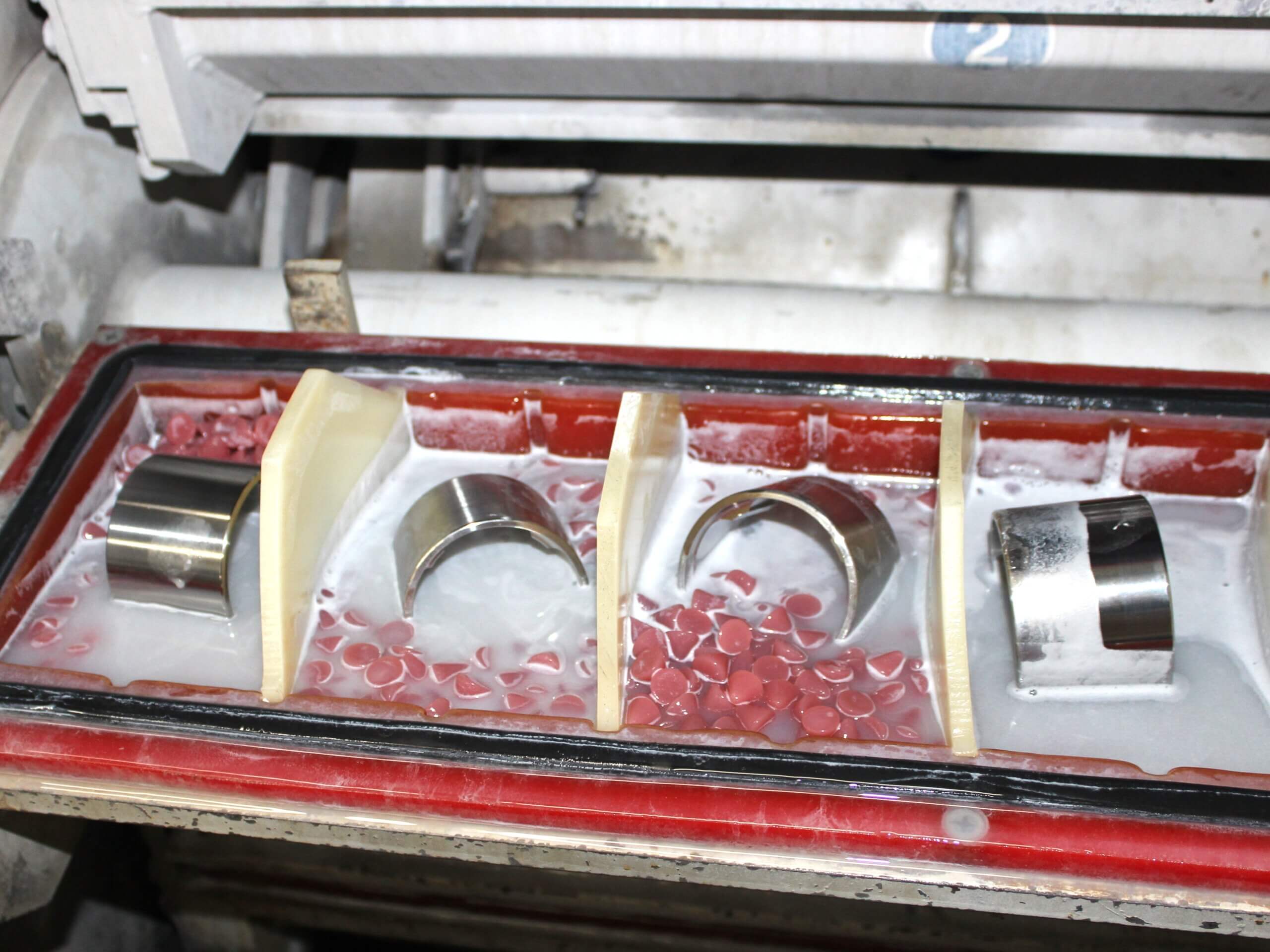
Before mass finishing became a commonplace method for finishing parts, the finishing process was accomplished by grinding or polishing parts one at a time by hand. Not only was this time-consuming and costly, but it produced less than stellar results. The introduction of mass finishing provided a way to deburr many parts simultaneously. Now finishing parts is quicker, less costly, and results in a more uniform finish. Mass finishing can also be used to polish, brighten, clean, and descale parts.
Commonly referred to as a “loose-abrasive” method, mass finishing typically involves tumbling or vibrating large batches of parts inside specially designed barrels or tubs with tumbling media, water and surfactant.
Tumbling media is made in a variety of shapes and sizes from materials such as ceramic, porcelain, resin bonded plastic, metallics, as well as organic materials like corn cob grit, wood pegs, and sand. The media used during finishing is determined by the desired finish of the part.
Mass finishing is a process that can be done wet or dry, according to the required application. Wet mass finishing mixes water and other water-soluble compounds inside the chamber with the media and parts. As the name suggests, dry mass finishing does not utilize liquids during the finishing process. However, media used for dry mass finishing is often softer and less abrasive than media used during wet mass finishing.
Centrifugal barrel and vibratory finishing are the most commonly used methods for mass finishing, though there are several other methods. Determining the best finishing method depends on many things, such as the size, shape, material, and desired surface roughness of the part. Here are some of the most common types of mass finishing utilized today.
Centrifugal barrel finishing, also known as CBF, uses centrifugal energy to polish parts. Parts are inside a hexagonal barrel with one or more types of media, water, and surfactant. Similar to a Ferris wheel, the turret is rotated causing the contents in the barrels to rotate in the opposite direction. The sliding motion of the barrel’s contents against each other removes the burrs and surface imperfections. CBF processing can be done wet or dry depending on the material and polishing requirements of the parts.
During vibratory finishing, parts and specially shaped pellets of media are placed inside of the vibratory tumbler chamber. The chamber is then vibrated, creating friction as the media rubs against the parts, which results in deburring and smoothing the surface. Depending on the application requirements, vibratory finishing can be done either wet or dry.
Like centrifugal barrel finishing, centrifugal disc finishing relies on a rotating motion to deburr parts. Rather than a cylindrical barrel, centrifugal disc finishing uses a round barrel with a rotating disc at the bottom. During the finishing process, the disc pushes the parts and media out and up against the side of the chamber. As the contents get closer to the top, it begins to slow down before descending and starting the process over again. This process is perfect for the removal of strong burrs and radiusing on small to medium sized parts.
Electropolishing uses electricity to improve the surface finishing of metallic parts by removing peaks and valleys from their surface. To do so, metallic parts are immersed in an electrolyte solution containing ions, atoms, or molecules. The solution is then subjected to an electrical current which creates a film. Once the film has been removed, the surface of the part is microscopically smooth with limited imperfections.
This process is used for the finishing of metallic parts. A surface-active compound is used to form a soft film on the surface. The film is then removed from the peaks of the surface with nonabrasive media, leaving the valleys untouched. This process is repeated until a uniform finish is obtained.
There are many benefits to mass finishing. In addition to being more cost-effective, mass finishing greatly reduces lead times and results in a more uniform finish every time. While these elements are certainly key factors in an improved finishing process, there are several other benefits.
Our free sample processing will show first-hand how our finish will be your finish.
LET’S GET IT FINISHED.